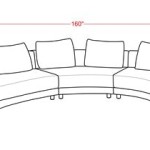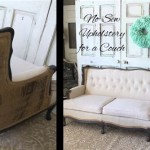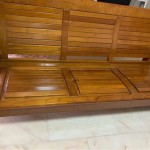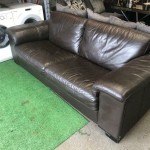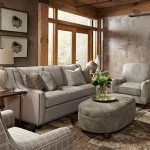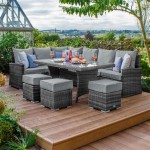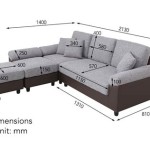Sofa Cushion Design Images and Wooden Works: A Comprehensive Overview
The interplay between sofa cushion design and wooden works represents a critical component of interior design, impacting both aesthetics and functionality. Understanding the various elements involved, from the selection of appropriate cushion designs to the craftsmanship of wooden sofa frames, allows for the creation of visually appealing and comfortable living spaces. This article will delve into the intricacies of sofa cushion design, examine the role of wooden works in sofa construction, and explore the integration of both elements for optimal interior design outcomes.
Sofa cushions serve as more than just padding; they are integral design elements that contribute significantly to the overall style and comfort of a sofa. The selection of appropriate cushion designs, including factors like shape, size, fabric, and filling, is paramount in achieving the desired aesthetic and ergonomic properties. Similarly, the wooden frame of a sofa provides the structural foundation and impacts the sofa's overall durability and visual appeal. The quality of wooden works, including the type of wood used, the joinery techniques applied, and the finishing details, contribute significantly to the longevity and aesthetic value of the sofa.
Understanding Sofa Cushion Design Elements
Sofa cushion design encompasses a wide range of considerations, all of which contribute to the overall look and feel of the sofa. These elements can be broadly categorized into shape and size, fabric selection, and filling material. Each of these plays a crucial role in determining the aesthetic appeal, comfort, and durability of the cushions.
The shape and size of sofa cushions significantly impact the overall aesthetic and comfort. Common shapes include square, rectangular, round, and bolster cushions. The size of the cushions should be proportional to the size of the sofa and the intended use. For instance, larger cushions are often used on deeper sofas for a more relaxed and inviting feel, while smaller cushions may be preferred on more formal sofas. The arrangement of cushions, including the number and placement, also affects the visual balance and comfort level. Asymmetry in cushion arrangement can create a more modern and eclectic look, while a symmetrical arrangement provides a more formal and traditional feel.
Fabric selection is another critical aspect of sofa cushion design. The choice of fabric impacts the aesthetic appeal, durability, and maintenance requirements of the cushions. Fabrics like linen, cotton, velvet, and leather are commonly used for sofa cushions, each offering unique properties. Linen and cotton are breathable and comfortable but may be more prone to wrinkling. Velvet offers a luxurious and soft feel but requires more careful maintenance. Leather is durable and easy to clean but can be more expensive and may not be as comfortable in warmer climates. The color and pattern of the fabric should complement the overall design of the sofa and the surrounding room. Neutral colors provide versatility and can be easily paired with other design elements, while bolder colors and patterns can add visual interest and personality. Consider the fabric's resistance to wear and tear, stain resistance, and ease of cleaning when making a selection.
The filling material used in sofa cushions affects the comfort and support provided. Common filling materials include foam, feathers, down, and fiberfill. Foam provides good support and is relatively inexpensive, but it may not be as durable as other options. Feathers and down offer a soft and luxurious feel but require more maintenance and may not be suitable for people with allergies. Fiberfill is a synthetic material that is hypoallergenic and easy to care for, but it may not provide as much support as foam or feathers. The density and type of filling material should be chosen based on the desired level of comfort and support. A combination of different filling materials can also be used to achieve a specific feel. For example, a cushion with a foam core wrapped in down provides both support and softness.
The Role of Wooden Works in Sofa Construction
The wooden frame of a sofa provides the structural foundation and significantly impacts the sofa's overall durability, stability, and aesthetic appeal. The selection of the type of wood, the joinery techniques used, and the finishing details all contribute to the quality and longevity of the sofa. Understanding these aspects of wooden works is crucial for selecting a sofa that is both aesthetically pleasing and built to last.
The type of wood used in sofa construction affects its strength, durability, and appearance. Hardwoods like oak, maple, and walnut are generally preferred for their strength and resistance to wear and tear. Softwoods like pine and fir are less expensive but may not be as durable. The choice of wood should be based on the intended use of the sofa and the desired aesthetic. For example, a sofa intended for heavy use in a family room should be constructed from a durable hardwood, while a sofa intended for occasional use in a guest room may be made from a less expensive softwood. The grain pattern and color of the wood also contribute to the overall look of the sofa and should be considered when making a selection.
Joinery techniques are essential for ensuring the structural integrity of the sofa frame. Common joinery techniques include mortise and tenon, dovetail, and dowel joints. Mortise and tenon joints are strong and durable and are often used in high-quality sofa frames. Dovetail joints are aesthetically pleasing and provide excellent strength. Dowel joints are less expensive but may not be as strong as mortise and tenon or dovetail joints. The selection of appropriate joinery techniques depends on the type of wood used and the overall design of the sofa. Well-executed joinery ensures that the sofa frame is stable and resistant to warping or cracking.
Finishing details, such as sanding, staining, and sealing, enhance the appearance and protect the wood from damage. Sanding smooths the surface of the wood and prepares it for finishing. Staining adds color and enhances the natural grain pattern of the wood. Sealing protects the wood from moisture, scratches, and stains. The type of finish used should be appropriate for the type of wood and the intended use of the sofa. A durable finish is essential for protecting the wood and ensuring the longevity of the sofa. The finish can also contribute to the overall aesthetic of the sofa, adding a touch of elegance or a rustic charm.
Integrating Sofa Cushion Design and Wooden Works for Optimal Interior Design
The successful integration of sofa cushion design and wooden works is essential for creating visually appealing and comfortable living spaces. This integration involves careful consideration of the interplay between these two elements, ensuring that they complement each other in terms of style, color, and functionality. Achieving this balance requires a holistic approach to interior design, considering the overall aesthetic of the room and the intended use of the sofa.
Color coordination plays a significant role in the integration of sofa cushion design and wooden works. The color of the cushion fabric should complement the color of the wooden frame, creating a cohesive and harmonious look. Neutral colors, such as beige, gray, and white, are versatile and can be easily paired with different wood tones. Bolder colors can be used to add visual interest, but they should be carefully chosen to ensure that they do not clash with the wood. The use of complementary colors can create a vibrant and dynamic look, while analogous colors can create a more subtle and harmonious effect. The overall color scheme of the room should also be considered when selecting the colors for the sofa cushions and wooden frame.
Style consistency is crucial for creating a cohesive and harmonious interior design. The style of the sofa cushions and wooden frame should complement the overall style of the room. For example, a modern room might feature a sofa with clean lines, minimalist cushions, and a light-colored wooden frame. A traditional room might feature a sofa with more ornate details, plush cushions, and a dark-stained wooden frame. Mixing different styles can create an eclectic look, but it should be done carefully to avoid creating a jarring or disjointed effect. The style of the sofa should also complement the style of other furniture and accessories in the room.
Functionality is another important consideration when integrating sofa cushion design and wooden works. The design of the cushions should be comfortable and supportive, while the construction of the wooden frame should be durable and stable. The height and depth of the sofa should be appropriate for the intended use. For example, a sofa intended for lounging should be deeper and more comfortable than a sofa intended for formal seating. The arrangement of cushions should also be functional, providing adequate support and allowing for comfortable seating. The wooden frame should be strong enough to support the weight of the cushions and occupants, ensuring that the sofa is safe and durable.

Woodworking Wood Project Working For Beginner

Diy Couch How To Build And Upholster Your Own Sofa

Couch

Wooden Sofa With Cushion 5 Seaters Teak Wood

Traditional Wooden Sofa Set Kuber Furniture

Diy Couch How To Build And Upholster Your Own Sofa

L Shape Sofa Modern Set Design Sheesham Wood Casa Furnishing

Diy Couch How To Build And Upholster Your Own Sofa

Wooden Sofa Set With Cushion In Pondicherry Sri Ganesan Furniture

Sofa Set Buy Stylish Wooden Designs For Living Room Furniture Every Home Sunrise International
Related Posts

